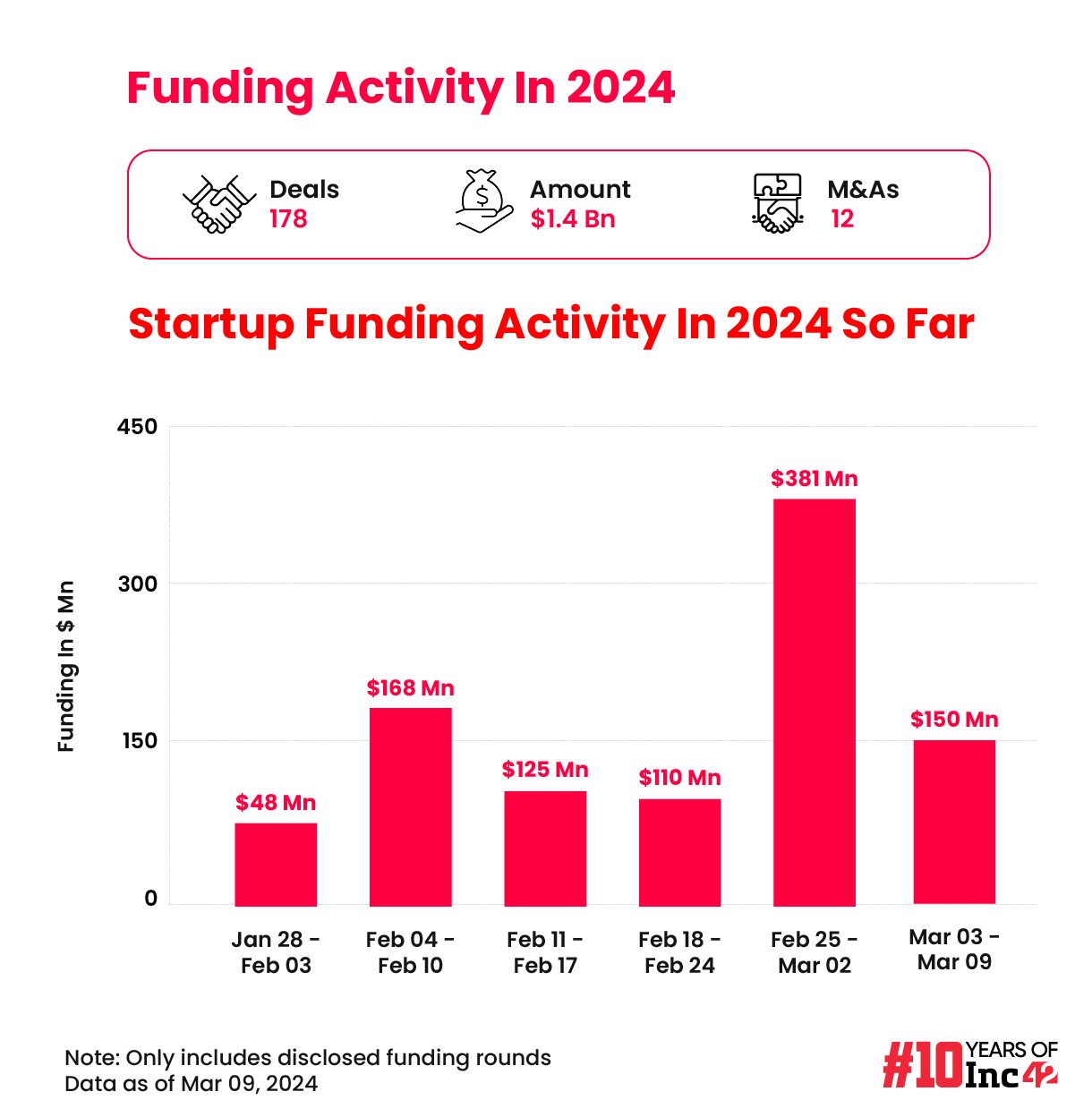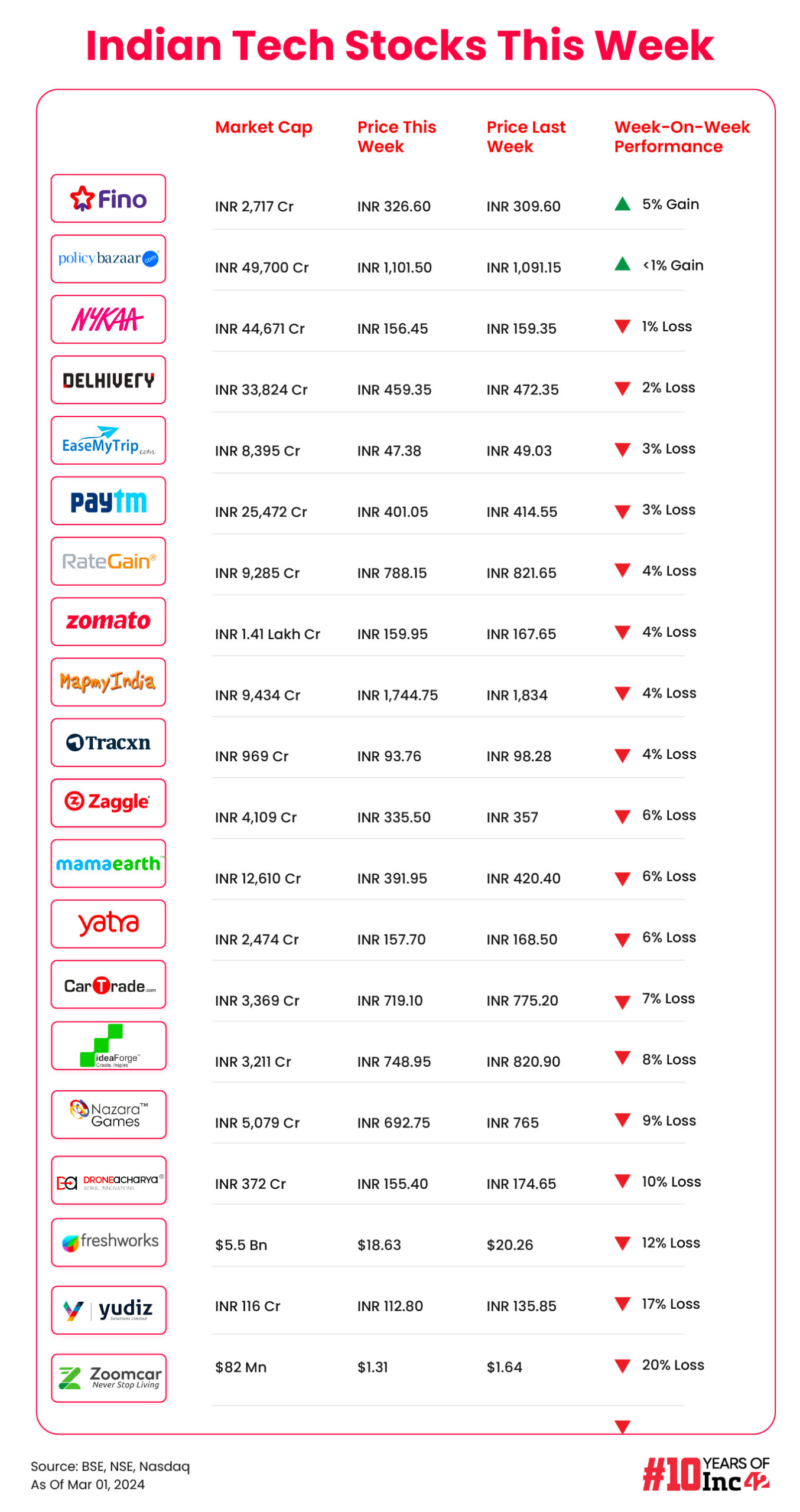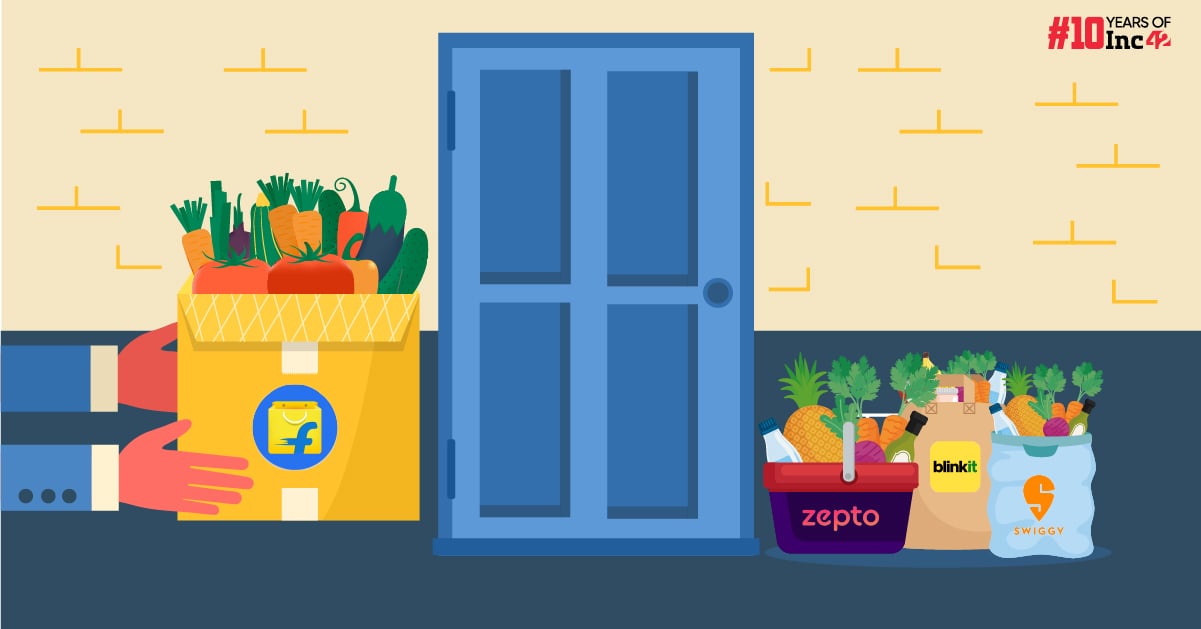Last time when we caught up with things at Flipkart, our focus was on the company’s fintech ambitions, and in particular, digital lending.
Since then we have also detailed the company’s broader payments play with Super.Money and more recently the launch of UPI on Flipkart. But Flipkart is not forgetting about ecommerce, and for the past few years, this story has been written by quick commerce. So now, Flipkart is looking to bet big on grocery and quick commerce again.
This Sunday, we wanted to see whether Flipkart can get third-time lucky with grocery deliveries and quick commerce, after two relatively unsuccessful attempts over the past few years.
In the past few weeks, we have delved into the turnaround at Blinkit, the revenue momentum gathered by Swiggy and Zepto in quick commerce, which has gone from proof of concept to big business in two years. Can Flipkart emulate this rapid growth?
But before that, here’s a look at the top stories of the week from our newsroom:
- Ola’s Glacial Pace: Despite an early start in the EV mobility space, Ola Cabs has lagged its rivals when it comes to transitioning to electric vehicles for ride-hailing. Will this inertia come back to bite Ola?
- Crypto Battle At NCLT: LetsKrypto cofounder Vaibhav Shukla has moved the NCLT against the cofounders of cryptocurrency trading platform Brine.fi and investor Elevation Capital, accusing them of stealing cryptocurrencies and other assets
- ZestMoney Founders’ New Innings: Former ZestMoney CEO Lizzie Chapman and CTO Ashish Anantharaman are working on a B2B fintech venture, SwiffyLabs, which is expected to raise $100 Mn from Jio Platforms as it starts off
Quick Commerce = Revenue
The biggest factor behind Flipkart’s most recent push into quick commerce is the revenue outcome. Ten-minute deliveries are no longer just a fancy proposition, as they were in 2020 and 2021. While at that time, many wondered about the need for such quick deliveries, the persistence of platforms and the obvious convenience for consumers have won out.
Then many wondered whether the segment can see scale with profitability, and Blinkit is clearing these doubts. Cumulatively, Swiggy Instamart, Zepto, Blinkit — the three biggest quick commerce platforms — are on track to report combined revenue north of $1 Bn in FY24 as we had reported earlier.
Through improvements in customer acquisition costs and higher retention, Blinkit’s contribution margin, as a percentage of gross order value (GOV), improved to 2.4% in the latest third quarter of FY24 from 1.3% in Q2 FY24.
Zepto also reported an improvement in net profit margin from -277% to -63% in FY23, and claims to be on track to become EBITDA positive by next March. As one high-level source at Mumbai-based Zepto told us recently, “People are starting to realise that quick commerce is not only a much more concrete guarantee than people thought a year-and-a-half ago, but it’s also gonna be a much bigger category. I think there is a realisation that quick commerce has the potential to disrupt ecommerce.”
Further, sources at Swiggy told Inc42 that Swiggy Instamart’s revenue growth has come alongside an increase in take rates from Instamart. Average order value has also grown by over 20% in the ongoing fiscal year to around INR 460 per order. The company is likely to report close to INR 5,500 Cr in revenue from Instamart in FY24.
This momentum is what has attracted Flipkart to quick commerce and the large grocery pie. This offers a much larger outcome potential than what ecommerce marketplaces are currently doing given their heavy reliance on sales and discounts for growth. Brands are starting to realise that quick commerce puts them closer than ever to the online consumer and marketplaces are taking a backseat.
Grocery 3.0 At Flipkart
This thesis explains Flipkart and indeed Meesho’s push towards grocery. A recent Bernstein report suggested that quick commerce is now about 40% of the online grocery delivery category, where Blinkit is the market leader with about a 40% market share.
The emergence of Meesho as a credible challenger to the Flipkart-Amazon duopoly has also changed the dynamics of marketplaces as a category. So naturally Flipkart is looking for a valve and quick commerce is its major bet.
Over the past few years, Flipkart has taken a couple of stabs at grocery delivery between 2015 and 2017. First, it launched Flipkart Quick, which offered 30 to 90-minute deliveries in some cities. It also launched Flipkart SuperMart in 2017, which became the central focus after Flipkart Quick was phased out in November 2022.
Supermart is a company-owned channel, which required Flipkart to set up fulfilment centres. Currently, it claims to have 24 grocery fulfilment centres catering to more than 1,800 cities and 10,000 PIN codes across India, but scaling this up requires capital.
The company is expecting a further infusion from parent Walmart as part of a $1 Bn round. Walmart has committed to a $600 Mn infusion, which would take Flipkart to the next phase of growth, which the company says will be profitable growth. It has raised some portion of this funding round in a recent $111 Mn fundraise.
Why Quick Commerce Makes Sense For Flipkart
Kalyan Krishnamurthy, the group CEO of the Walmart-led ecommerce giant recently said the company has scaled up its verticals in a sustainable manner. While it continues to be a loss-making company as a whole, the group is nearing profitability on the back of a significant reduction in monthly cash burn.
Flipkart Internet Private Limited, the B2C arm of Walmart-owned Flipkart, saw its operating revenue near the INR 15,000 Cr mark in FY23, while Flipkart’s B2B or wholesale arm, Flipkart India Private Ltd, reported operating revenue to INR 55,823.9 Cr in FY23.
Cumulatively, Flipkart remains a league apart from quick commerce players, but revenue growth is a challenge, despite the meteoric rise of Zepto and Co. But the rise is noteworthy for how quickly it has come and how quick commerce has disrupted marketplaces.
One anecdotal example points to the growing significance of quick commerce: D2C brands pitching on Shark Tank India’s season 3 have routinely spoken about growth from quick commerce. The channel dominance of marketplaces is fading for fast-moving consumer goods or FMCG, and quick commerce has become a major focus area, multiple D2C brands have told Inc42 over the past few months.
Quick commerce offers a much more streamlined view on inventory for new brands and helps them adjust faster to demand supply mismatches, for instance. Sellers also appreciate being closer to their consumers and lower order returns through quick commerce. Plus, new brands see faster traction as brand discovery on quick commerce is less reliant on ads for the time being.
This perhaps explains Flipkart’s recent focus on hyperlocal logistics for quick commerce, which has been solved to a large extent by incumbents Zepto, Swiggy and Blinkit. And this is delivering immediate results, whereas clearing the pan-India logistics hurdle is a patient game.
Flipkart’s local distribution network is relatively strong given its penetration in last-mile logistics over the years through EKart. The company can leverage this intelligence and the fleet for more efficient quick commerce operations. It has also built up expertise in warehousing and fulfilment through its ecommerce journey and its various acquisitions over the years, and this is going to be a key determinant of the quick commerce battle.
There is speculation of Flipkart acquiring cash-strapped Dunzo, and Dunzo’s hyperlocal intelligence and data related to customer orders over the years will be particularly critical for Flipkart in its quick commerce bid. But given Reliance’s 25% ownership in Dunzo, talks for acquisitions are likely to take a while and the deal is not certain to materialise.
Zig Zag On Ecommerce Street
While there are some clear advantages for Flipkart thanks to its experience of creating ecommerce as a category for India, there’s little doubt that the revenue and profits playbook of existing players is a bigger trigger.
Plus, Flipkart does not have the luxury of time and cannot fail in its grocery push yet again. That’s because ecommerce and quick commerce are converging fast. And increasingly, it’s looking like the ecommerce battle in most large cities and metros will have more than two players soon.
The likes of Zepto and Blinkit are investing heavily in delivering higher-value products through their dark stores and are looking to attract D2C brands, even as Flipkart is eyeing the quick commerce territory. In other words, both segments of digital commerce are racing into each other’s way.
Flipkart, Meesho and potentially the likes of JioMart and others joining the quick commerce rush is likely to throw fresh spanners in the works of Zepto, Blinkit and Instamart. Competition means higher customer acquisition costs and that could potentially mean the loss of momentum on the profits side. And this is the competition that’s arriving with millions to spend and with strong brand recalls.
Blinkit, Zepto and Instamart have turned around the perception of quick commerce from its early days, and built brand loyalty which is paying off today. Customer service is one of the key criteria for consumers choosing a grocery delivery service, as our survey in 2023 showed.
And how will Amazon India respond? The ecommerce giant has fleshed out its fintech services in recent months, but will Flipkart’s move into grocery and quick commerce, force Amazon to take another punt at it.
Amazon Pay has continued to chug along, but just like Flipkart, Amazon has not yet become the quick commerce force it would want to be, despite heavily promoting Amazon Fresh in 2023 for its two-hour deliveries.
It will be interesting to see how the two ecommerce ‘veterans’ adjust to the new reality. But so far Amazon has not signalled a new punt at quick commerce, and instead is going after Meesho’s pie with unbranded fashion and other products.
All things considered, it’s been a while since ecommerce was such hot news in India. Quick commerce and grocery delivery is perhaps the most interesting new dynamic in digital commerce since the quick entry and exit of social commerce and live commerce. It won’t be a while before quick commerce becomes the default growth model for ecommerce.
It’s somewhat funny that this is a fight over who will deliver the most fruits and vegetables. Quick commerce has reignited the Indian ecommerce wars.
Sunday Roundup: Tech Stocks, Startup Funding & More


- WoW Funding Activity Slips: Investment activity across the Indian startup ecosystem dipped again in the first week of March after a brief uptick. Startups raised over $150.1 Mn across 17 deals, a 254% decline from the previous week
- India’s AI Warchest: As AI mania grips the world, the Indian government approved the budget for the IndiaAI Mission with an allocation of INR 10,372 Cr over the next five years driven by public private partnerships
- App Store Battle: Google has agreed to reinstate the Indians apps which were delisted from Play Store in late February, according to IT minister Ashwini Vaishnaw, but the bigger battle is likely to go on for a few more months


- Antfin’s Windfall: Chinese tech giant Ant Group’s arm Antfin Singapore offloaded 2% stake in Zomato via bulk deals for INR 2,827 Cr as the foodtech major’s share priced saw some weakness this week

